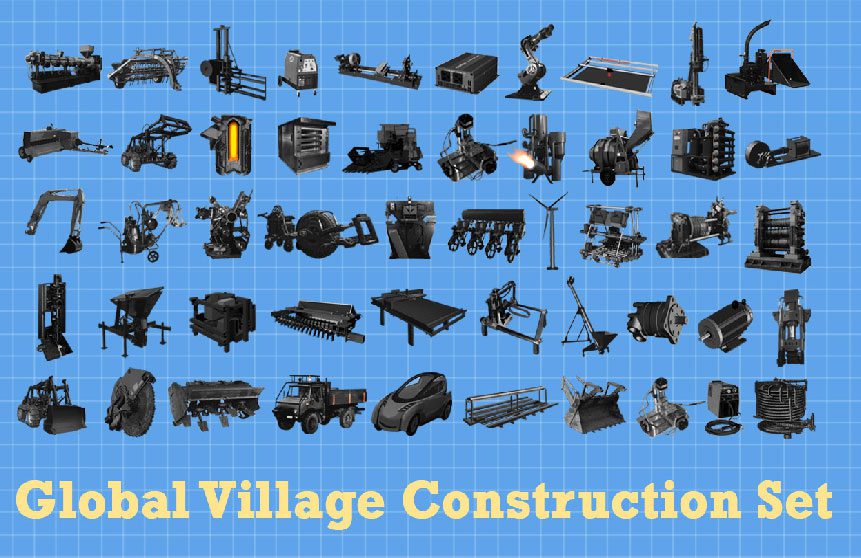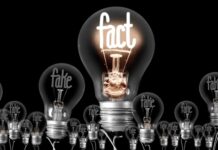Organizations Trying to Create Positive Change
This is a first installment in a new series of articles where I will be reviewing innovative companies—organizations—and ideas that have the potential to reshape our future in a positive way. I will not be reviewing these organizations from a valuation basis, but rather from a conceptual one, and potential impact they can have on our daily lives.
Disclaimer
I hold no ownership in these companies and I am not being compensated in any way. The companies and organizations I will be reviewing are ones that interest me, and ones I would like to see succeed, so I will have that bias going in.
Our Motivation
The purpose of these articles is two-fold. 1— Bring more attention and support to movements that are making a positive difference in our world. 2—inspire others to create positive change by showing examples of what can be done with a vision and the perseverance to see it through.
Open Source Ecology (OSE)
One of the most interesting organizations on my radar right now is, Open Source Ecology (OSE). When we hear the words open source, we tend to think about software. After all, that’s where the term was originally coined many years ago. OSE is open source hardware, which goes beyond the virtual world of software and solves real world challenges with bold new ideas.
What is Open Source?
Source—Wikipedia
In production and development, open source as a development model promotes a universal access via free license to a product’s design or blueprint, and b) universal redistribution of that design or blueprint, including subsequent improvements to it by anyone.[1][2] Researchers view open source as a specific case of the greater pattern of Open Collaboration, “any system of innovation or production that relies on goal-oriented yet loosely coordinated participants, who interact to create a product (or service) of economic value, which they make available to contributors and non-contributors alike”.[3] Before the phrase open source became widely adopted, developers and producers used a variety of other terms. Open source gained hold with the rise of the Internet, and the attendant need for massive retooling of the computing source code.[4][page needed] Opening the source code enabled a self-enhancing diversity of production models, communication paths, and interactive communities. The open-source software movement arose to clarify the environment that the new copyright, licensing, domain, and consumer issues created.[citation
Founder of OSE—Marcin Jakubowski Ph.D.
Marcin Jakubowski founded Open Source Ecology in 2003. Mr. Jakubowski graduated from Princeton University with honors and earned his Ph.D. in fusion physics from the University of Wisconsin. Mr. Jakubowski says that after he received his formal education, he found himself useless in solving “wicked problems” (I strongly disagree with him on that and so does his body of work). So he started the Factor-e Farm in Maysville, Missouri — which is the birthplace of The Global Village Construction Set.
Mr. Jakubowski’s vision is to re-design the 50 machines required to develop a societal infrastructure from the ground up, at a fraction of the cost of the machinery currently available. What’s more, it’s all done in true open source fashion. He publishes and openly shares all his information in an effort to disrupt the current distribution system, as well as create an atmosphere that can produce the best design possible.
The Global Village Construction Set (GVCS)
Source—opensourceecology.org
The Global Village Construction Set (GVCS) is a modular, DIY, low-cost, high-performance platform that allows for the easy fabrication of the 50 different Industrial Machines that it takes to build a small, sustainable civilization with modern comforts. We’re developing open source industrial machines that can be made at a fraction of commercial costs, and sharing our designs online for free.
The GVCS in itself consists of many other Construction Sets – as we build not individual machines, but construction sets of machines. As an example, the Fabrication Construction Set component can be used to build any of the other machines. Our goal is lifetime design, and low maintenance so only a few hours of maintenance per year are required to keep any machine alive.
We have built the first machine in 2007 – the Compressed Earth Brick Press. Since then, we have been moving forward steadily, improving the performance and production efficiencies of our machines. We have achieved a landmark One Day production time of the Compressed Earth Brick Press in 2012, and we intend to bring down the production time down to 1 day for each of the other machines. In 2013, we used our tractor, brick press, and soil pulverizer to build a comfortable home – the Microhouse. We continue to dogfood our tools in agriculture, construction, and fabrication – as we build our facility up to a world-class research center for open source, libre technology and decentralized production. In 2014, we will be moving to a replicable workshop model of production – integrating immersion education and production – where we intend to scale by distributing our open enterprise models far and wide. Our goal is to demonstrate how these machines contribute to creating a world beyond artificial material scarcity – by creating an open documentation, development, and production platform – towards the open source economy.
Our metric of completion is demonstrating a replicable, open source, social production model for a given machine. We call this the Learning Factor-e model. The main steps are a proof of concept, first prototype, full documentation, a working prototype, and an open enterprise model.
OSE Workshops
OSE conducts workshops on the Factor e Farm in Maysville, Missouri, where people learn about the localized micro-factory concept, as well as the prototype being offered in that particular session. These workshops are essential to the development of new prototypes and serve to futher grow the open source hardware movement. I strongly recommend to anyone interested in creating real, meaningful change, to get involved and learn more about OSE. Here is the link: OSE Workshop
Possible Additions to The GVCS
I would really like to see OSE add a greenhouse kit to their program as well as more solar energy research & development. The green house prototypes could be climate oriented. OSE could design a standard above ground greenhouse for warmer climates, and an underground version that could be used year-round in colder climate areas. If OSE could incorporate a solar energy system that could be integrated with the micro-housing design they currently offer, that would be very exciting too. It would not surprise me if they’re already working on it.
Implications of the Global Village Construction Set
The OSE and their GVCS has the potential to make a profound impact which could have a ripple effect through our whole economy. GVCS decentralizes the current concentration of power and provides control for, we the people, at a local level. By freely providing people information to build all the tools required to create a comfortable society, at a fraction of the cost, this is a movement with legs which has the ability to transform the status quo. Will every one start building tractors and brick presses? Probably not, but there will be many people who will. Businesses will spring up all over boosting local economies and further mobilize this movement.
Artificial Scarcity
Mr. Jakubowski states in his many speeches – we do not have a lack of natural resources—and he is correct — we don’t. We are rich in raw materials— we’re just using an antiquated system based on limiting beliefs that no longer serve us (I’m not sure that it ever really did). Our monetary system is also designed to give the illusion of scarcity, but I will save that subject for another article.
Open source can find responsible ways to exploit these resources using more efficient methods than we currently use. Another inefficiency built into the system is that it has us competing against each other, rather than working with each other towards a goal that would benefit all. I’m not suggesting that competition is bad, but imagine if we come together to solve our biggest challenges where the solutions would benefit everyone!
Scarcity is not a fact, it’s a dare. Scarcity is a challenge for us to find innovative ways with new thinking that will allow us to solve our challenges and move forward without compromising our current standards.
Open Source Collaborative Benefits
The benefits of open source hardware are quite profound if you really think it through to its ultimate conclusion. This idea reaches far beyond the machinery of the GVCS. One of our greatest gifts is that we all have different life experiences and possess various skillsets which allow us to see designs or problems from many different perspectives. This would be a pretty boring world if we all thought the same. True innovation happens when someone sees an existing challenge from a totally different perspective. That is how the best ideas are born.
By freely sharing the source or design of a concept with the world, we use our greatest strength, which is our diversity of thought. When groups of people get together to solve a problem that can benefit us all, there is an accelerated learning and development process that takes place which produces superior results.
Most people are motivated by monetary gains, but the motivation that open source provides cannot be duplicated by any monetary incentive programs by the large corporations. What motivates people more than money (even if they don’t know it) is a sense of accomplishment and fulfillment. Money is an illusion, an artificial incentive, and it’s not what truly drives us at a deep level. Money is just a means to an end for most of us. Fulfillment at a personal level over-rides pieces of paper or digital numbers in our bank account and more people are realizing this every day. In my opinion, open source hardware will grow exponentially once enough people realize the true benefits of this practice.
OSE Circumvents the Wasteful Patent System
Mr. Jakubowski raises another very good point in his presentations. In 2011, Apple and Google spent more money on patents then they did on research & development. These are some of the largest companies in the world with massive resources designated to R & D. Granted, this doesn’t happen every year but the amount of capital that’s being re-directed to a line item category that produces no real results is a huge waste of capital that could have otherwise been spent on something much more productive. Open source does away with this wasteful expenditure and allows everyone who’s interested to take part in the advancement of a concept. The only time OSE uses patents is when they are defensive ones, which are used to keep the design open source.
The Spark Documentary
The Spark is an amazing documentary that features Mr. Jakubowski and a gentleman named, Nat Turner. Mr. Turner is another impressive individual with a simple, yet, powerful vision that has significant implications if applied on a global scale. Mr. Turner is teaching young people in New Orleans how to build and cultivate urban gardens. Mr. Turner went to the Lower 9th Ward after Hurricane Katrina struck, with a vision to help the community. He transformed an abandon grocery store into a youth center where he taught the local residents how to sell vegetables instead of crack cocaine. The Spark documentary trailer shows OSE teaming up with Nat Turner to transform the Lower 9th Ward in New Orleans into a functional community again. The Spark project, if successful, could be used as a testing ground that could illustrate to other cities, what could be done anywhere using this method.
Final Note
OSE is on the leading edge of a new revolution—evolution that has only begun. This is not a revolution that will be engaged with protest or force, this will be done with pragmatic ideas that will win over hearts and minds. We are going through an evolution of consciousness where far more possibilities exist. OSE has the potential to re-arrange the whole playing field and change our current paradigm where large corporations will no longer have a monopoly over our goods and services, and we the people will have stewardship over this new system.
We are reaching a tipping point where enough of the population is realizing that there’s more to life than just money, and if we all work together for the greater good, the true value of what we’ll receive will be a fundamental improvement that will apply to all of our lives. There are millions of people donating their time and effort to noble causes because it’s fulfilling and it makes them feel good. We see this trend only growing larger in the coming years. We just saw Elon Musk of Tesla Motors release all his patents to the public and I think there will be more of that to follow too.
Will this be the answer to a utopian society overnight? NO, it will take hard work, focus, organization and perseverance, and mistakes will be made, but this is an excellent model to get the ball rolling. In 5 to 10 years we could be experiencing an exciting new paradigm.
Buckminister Fuller once said, “You never change things by fighting the existing reality, to change something, build a new model that makes the existing model obsolete.” That’s exactly what OSE is doing with the GVCS in a very big way.
If our readers know of a company or organization that you feel is making a positive difference in our world and would like to see highlighted, please let us know. Send any info to [email protected]
Strong proponent of individual liberty and free speech. My goal is to present information that expands our awareness of crucial issues and exposes the manufactured illusion of freedom that we are sold in America. Question everything because nothing is what it seems.




















